|
Wild Horses had a great launch yesterday! We were in the water by early afternoon and, better yet, we stayed there. No emergency haul outs this time! Although our original plan had us leaving dock this morning, we decided to stay put one more day to finish off some final route planning and organizing. We still need to hoist the dinghy out of the water so she hangs safely from our stainless steel arch while we are underway. There are also a lot of little things to do (I have 18 things on my list)! For route planning, we need to change up our familiar route a bit due to COVID-19 restrictions. For the last five years we have navigated a route that takes us briefly through the United States. With this route we are just “passing through” the United States so we are not required to check in with customs but it is quite common to see the US Coast Guard patrolling the area, making sure that Canadian boats like ours either cross back into Canada or head towards a US customs check point. Since the Canada-US border remains closed to non-essential travel, we have been told that patrolling of the waterways along the border has increased and that we should avoid even passing through US waterways. So, for the first time we will be taking a 100% Canadian route. It will be interesting to take this new route but I will miss navigating by the majestic Singer Castle that sits just inside the US border. This castle is an enormous and very grand chateau on Dark Island, built and originally owned by the president of the Singer Sewing Machine Company. Quite spectacular! We plan to throw off the dock lines bright and early tomorrow, on Canada Day. Leaving the dock at the same time will be a sailboat headed for Newfoundland. At the end of the Iroquois “cut through” they will be turning left and immediately going through the Iroquois Locks on their way down the St. Lawrence Seaway to Montreal and beyond. We, however, will be turning right to go up the Seaway onto the Thousand Islands. We wish them well with their adventure!
We just received the good news yesterday that our failed seacock has now been removed and a beautiful new one is installed. Yes! A big shout out to our fantastic boat mechanic, Roger, who not only prioritized our boat fix in amongst his very busy schedule (he literally had to squeeze us in by working late into the evening after he had finished a full day’s work on other boats). Thank you Roger! The true test of the new seacock, of course, will only be when Wild Horses is placed back in the water. We won’t have long to wait on this test – the re-launch of Wild Horses is set for Monday afternoon (June 29)! Our sail plan for this launch is pretty straight forward. We will spend Monday night at dock in Iroquois Marine Services and then throw off the dock lines just before breakfast on the Tuesday morning, for what should be a full week at various anchorages through the Thousand Islands before finally docking in our boat slip at Trident Yacht Club. The interesting part about departing from Iroquois is that it starts with the most harrowing part of the trip, a.k.a. “the cut through”. Immediately after leaving dock, we enter the cut through by making an acute turn to starboard and then slowly work our way through the narrow channel that will take us to the St. Lawrence Seaway, on our way to the Thousand Islands near Kingston. What makes the channel unnerving is a combination of underwater geography, boat size and a lack of navigation aids. The channel is VERY narrow with VERY rocky shorelines and riverbed. It is 7 feet at its deepest. Our boat is VERY beamy (i.e. wide) and its keel is 5’6”. Add these elements together and you can already see trouble. To up the level of difficulty, there are only 2 buoys to guide us through the approx. half a kilometre long channel, both are at the beginning. Once we pass the second buoy, we navigate using local knowledge (stay 35 ft off the starboard bank) and our eyes. During this extravaganza, Mike helms the boat and I am firmly planted at the bow of Wild Horses, eyes peeled to the water, looking for any semblance of the rocky underwater shelving that makes up the shorelines of the channel. The good news is that once through the channel, navigation along the St. Lawrence Seaway and into the Thousand Islands is easy and entertaining. Until Brockville, the view is much like being on the 401. Not much to see or do. But once we get to Brockville, we are treated to a vista of islands, cottages, million-dollar homes and even a castle (Singer Castle). And we have lots of anchorages to choose from!
So, we had a little problem with launch day. To be fair, our “launch” actually went quite smoothly. It was a few hours post-launch that everything went sideways. I will walk you through the drama, which involves Wild Horses taking on water and ends with her getting hauled out of the water, a mere 20 hours after launch. The day started great. We got all of our pre-launch tasks done well in advance of our one o'clock launch timeslot (boat fenders and dock lines attached; dinghy was hauled up from the ground and secured on deck; standing rigging adjusted for lifting). The travel lift and crew arrived on time and no problems were encountered with the move of the boat from the cradle to the water. Perfect! Next, Wild Horses was slowly and delicately lowered into the launching well. Easy! Mike did his check for leaks (there were none) before we gave the okay for the slings to be removed. Wild Horses was successfully launched! Our plan for the rest of the day was to test the engine (can only be done in the water), attach the sails and to do a few other things to make Wild Horses “season-ready”. We would then stay overnight and return back on Thursday to set sail for Kingston (Wednesday would be spent in Trenton celebrating my dad’s 81st birthday).
Everything had been going very smoothly and quickly so by late afternoon we had some extra time to test the boat’s air conditioning, something we normally do once docked in our slip in Kingston. Unlike land air conditioning systems, a boat uses water for cooling rather than air. The water for this system is pulled into the air conditioning system with a pump that draws the water through a hole in the bottom of the boat. The hole is regulated with a thru-hull and seacock so water only comes in on demand. We open the seacock, turn on the air conditioning and the pump starts drawing water from the lake. And voila! The inside of the boat gets cooled down within 15 minutes. But that isn’t what happened late afternoon on Tuesday. Mike opened the seacock and water started to flow… but not into the pump. It started to flow into the boat (technically it flowed into our bilges, which is the space below the floorboards). Thankfully, closing the seacock stopped the flow of water so we had time to inspect the problem. And, there it was. On the underside of the thru-hull valve was a crack. This is a critical failure – one that could easily sink the boat. The only thing that was keeping Wild Horses dry and floating was a broken seacock. Wild Horses needed to get out of the water to save her from sinking and to get that thru-hull fixed. It was now late in the day and all the marina staff had gone home so we knew haul out would have to wait until the morning. That night was very long but the seacock held and the water stayed out. First thing the next morning, the marina staff hauled Wild Horses out of the water and moved her back onto her cradle. She was finally safe once again. The fix is simple – we need the failed thru-hull removed and a new one installed in its place. This is work we would normally do ourselves if we had a few weeks to research and play around with how it is done. Since we want to be back in the water quickly, we have a boat mechanic doing the fix. Wild Horses should be back to her old self by the end of the week so we can plan her re-launch. Boating has its ups and downs. For us, there are far more “ups” so the occasionally “down” like this won’t impact us much. We know the cause of cracked thru-hull (one step in our winterizing was missed – big oops!) so we take this as a live and learn experience. Luckily, at the end of the day, the only damage was to our pocketbook and our egos. But both will survive this and, soon enough, we will be looking forward to our re-launch! 22 hours of sanding the boat bottom to get rid of old anti-fouling 10 hours of painting to add the new anti-fouling 7 hours to wax the hull (and tidy up a few gelcoat scratches…oops!) 4 hours to remove, clean and re-attach the stern rub rail 2 hours to test and summarize the boat systems 1 pandemic It all adds up to two tired but happy sailors who are more than ready to launch Wild Horses. And, of course, one beautiful boat! We have a launch date set for the afternoon of June 16. Exciting! We actually have to book a set time to launch Wild Horses because she needs to be lifted with a heavy capacity hoist (she is over 11,000 kgs!!!) and moved about 100 metres from the winter storage area to the water. At most marinas they use a “travel lift” for this type of work and Iroquois Marine Services is no different. On Tuesday afternoon, the boat hoisting crew will gingerly move the travel lift over top Wild Horses and attach two nylon lifting slings under her hull at designated spots near the bow and the stern of the boat. These spots are designated by the boat engineers and marked on the boat’s hull. This is critical. If this work isn’t done correctly (1) the boat could slip out of slings when moved and crash to the ground, likely resulting in costly damage OR (2) the boat’s hull could get pinched, likely resulting in costly damage. All I see is $$$$$. Once the boat gets to the water, it is then slowly and carefully lowered into the “well”. This is a carved- out section of the harbour strictly for launching boats. It is basically a rectangular steel box, ¼ above water and ¾ below water, with one open end. Boats are lowered into the closed-end, the lifting slings are then removed and the boat is manually (with dock lines) moved forward out of the open section of the rectangle. The challenge for Wild Horses is that this “well” is only 14.5 feet wide. Since Wild Horses has a massive beam (the widest part of a sailboat) at 14.1 feet, this leaves only about 2 inches of play on either side of the boat before our beautifully waxed hull scratches against the steel encasing of the well. There is a lot of breath being held during the launching process! As always, we will be a little sad to say goodbye to the boatyard. Weird but true. People tend to think of boats and boating as only fun when they are in the water but this isn’t entirely true. Over the last month of working in the boatyard we have had great chats (2 metres away of course!) with owners of the neighbouring boats, most of whom we only ever see in the boatyard as they do their boating in other waters or from other clubs/marinas. It is a fantastic community. Our pup Ocean also has full days in the boatyard, playing with whatever dogs are around. This year it was Gibbs, Diesel, and Mocha. She even met a boat chicken named Hey-Hey. Never a dull moment in a boatyard!
The last few weeks have been a storm of change. As a nation, we are watching the civil liberties crisis in the States with great concern and, too often, in horror. Demands for change stateside are undeniable and strong – perhaps strong enough to actually make people listen. Not just in the U.S. but in Canada too. Listening has to happen at all levels and, yes, that may mean some uncomfortable realizations. But hopefully it will also result in positive actions taken.
The new normal we are experiencing with the pandemic has also caused uneasiness and change. We are all, in some way, absorbing our evolving environment and adapting. Some days are hard and other days, maybe not so hard. One day at a time. For Mike and I personally, it feels like we have been on a fast-moving highway but constantly taking the offramps and onramps as we check things off our giant “get it done now” list. In addition to our boat commissioning work, we are finishing off our antifouling boat project (at the painting stage – yes!), we moved to Trenton and, finally, we sold one of our cars. Each of these events on their own would keep us busy but since they are all happening at once, we find our days very full and very tiring. The move to Trenton went as expected – a few days of packing and unpacking that went almost without a hitch. We were thrilled that all of our stuff fit in one high top van and two cars. We have been downsizing for several years so this felt like a win 😊. The only hitch happened on the day of our move. Packing the van took longer than expected, and in the rush to just “get going”, we forgot to leave the garage door opener for the new tenants (crap!). We had made it as far as Brockville when we realized it so this meant a 45-minute drive back to Ottawa to drop it off, a very long 1 ½ hour drive detour to an already long drive to Trenton at the end of a long day of packing. Sigh. The last week has been a combination of settling into our new home (new routines, new spaces) and driving to the boat to ready it for launch. As the boat is still in Iroquois but we are now in Trenton, this is now a 2 hour drive each way. Yes, the days are long, but we are pretty happy with our progress on our antifouling boat project. And, we are also very blessed to have such a comfortable and beautiful home to stay in while we ready the boat for launch. Yes, there is lots of change but there is also stability. We stay connected with friends and family (so necessary and calming), plus Wild Horses is still Wild Horses (our touchstone!) and we can’t wait until she hits the water. |
AuthorVictoria is a hiker, dog-lover, blog writer and planner extraordinaire. Oh, yeah and she is kind of fond of living on a boat. Categories
All
Archives
June 2024
|


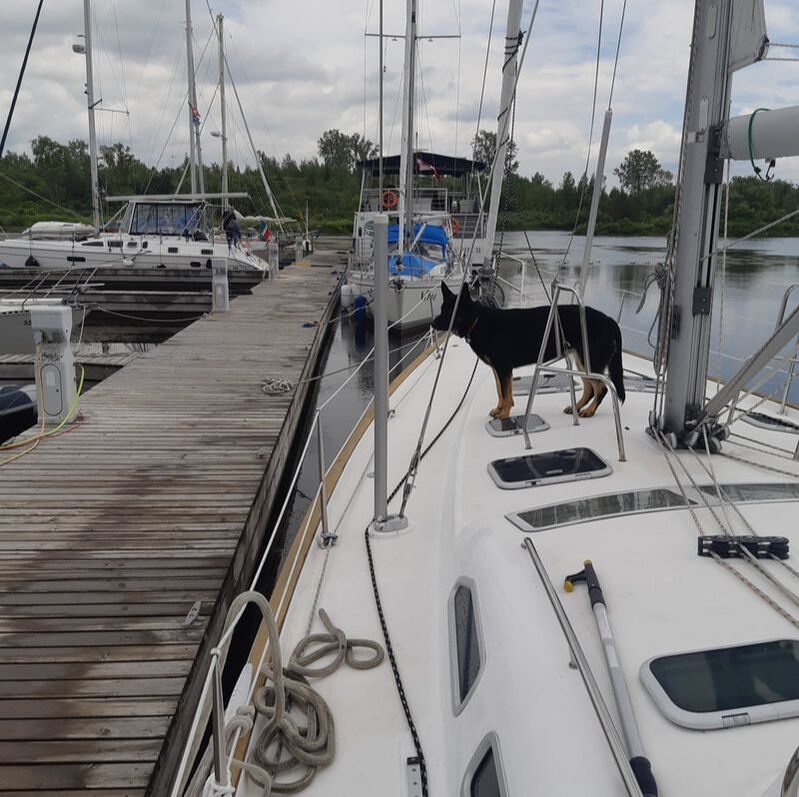
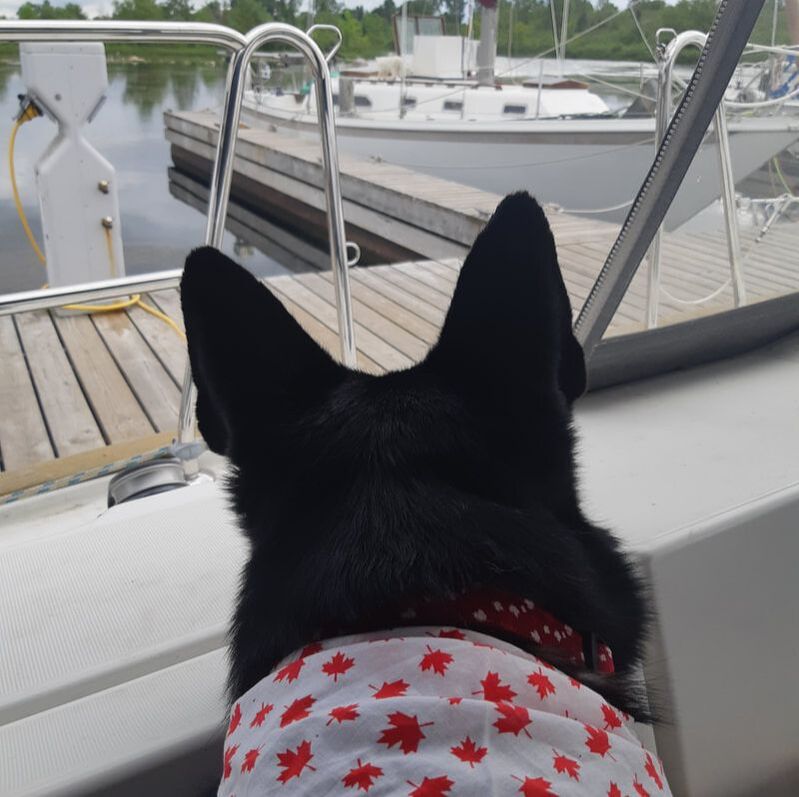

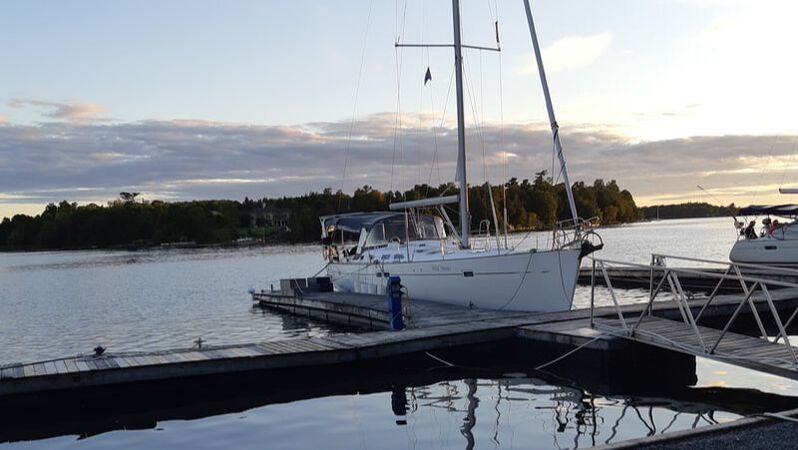
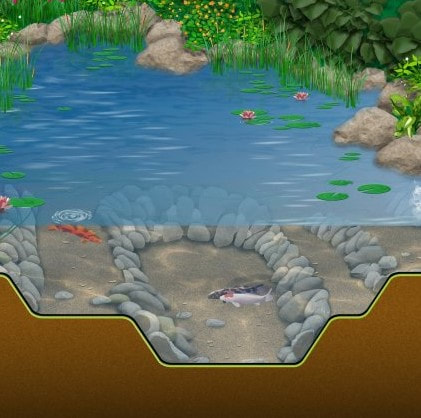


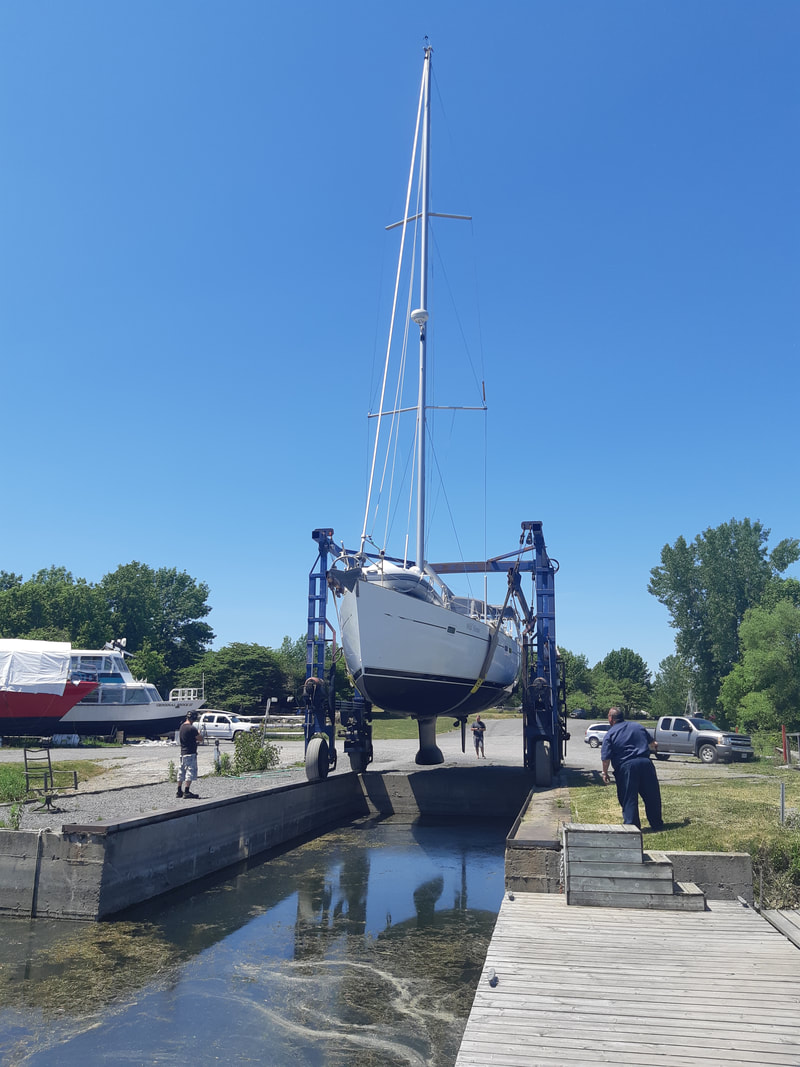

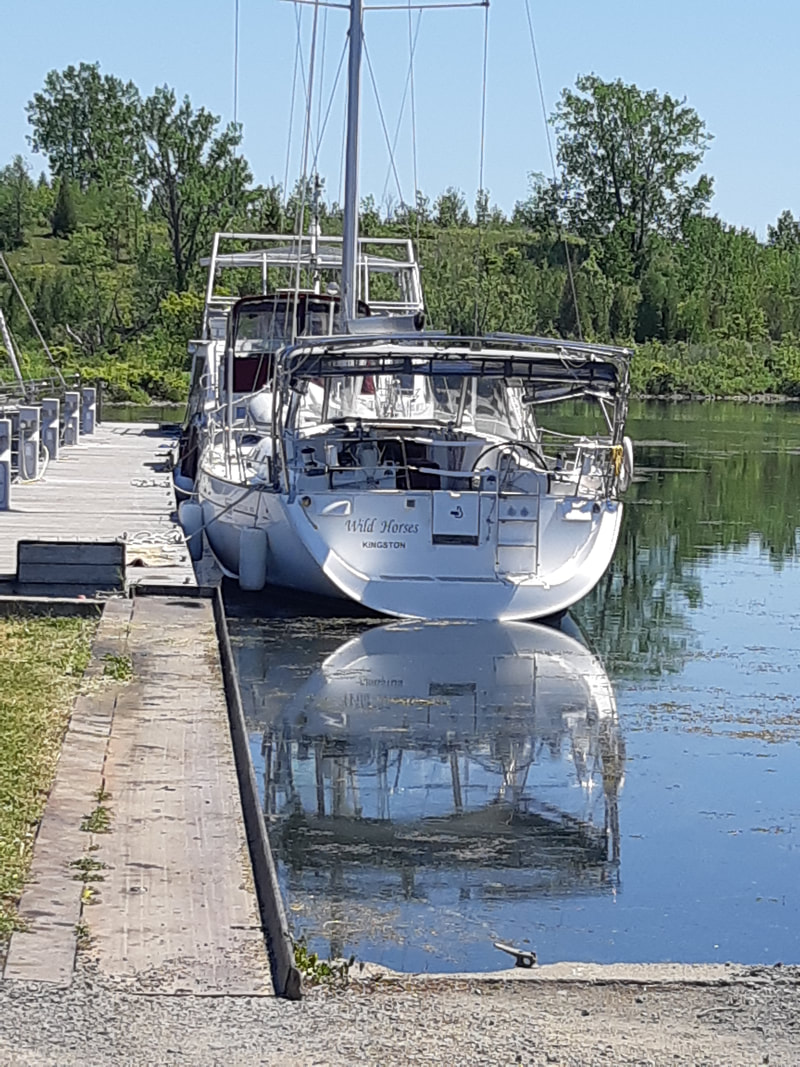







 RSS Feed
RSS Feed
